
Scars
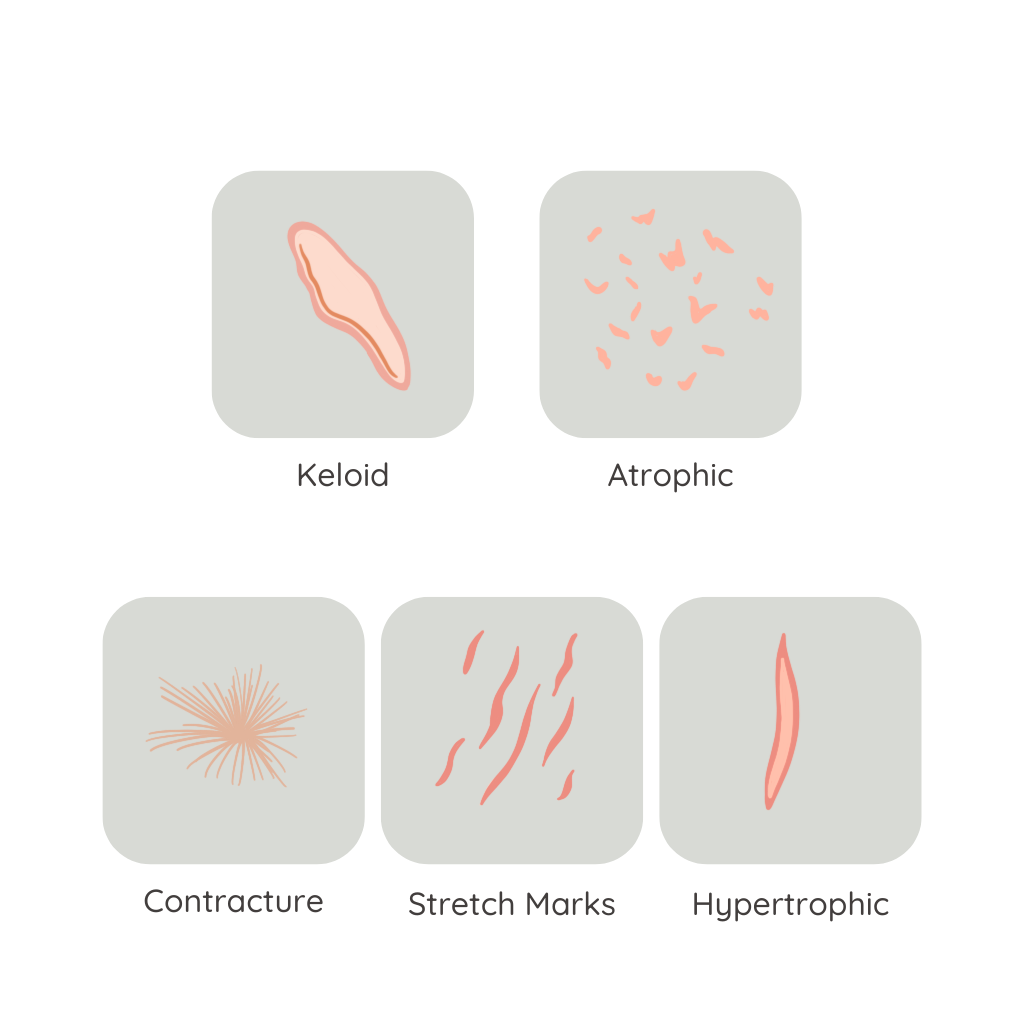
What is it?
Scars are the body’s natural way of healing and replacing lost or damaged skin. They form when the dermis, the deep layer of skin, is injured, triggering the process of fibrosis (combination of collagen + fribrin) to repair the wound. This new tissue has a different texture and appearance than the surrounding skin, often resulting in a visible mark. Scars can vary in size, shape, and color depending on factors like the depth of the wound, skin type, and healing process. While some scars fade over time, they remain as a lasting sign of the body’s healing process.
Key Facts
- Natural Healing Process: Scars form as part of the body’s natural response to skin injuries, replacing damaged tissue with collagen.
- Different Types: Scars can appear in various forms, including hypertrophic, keloid, atrophic (like acne scars), and contracture scars from burns.
- Location Matters: Scars may be more noticeable in areas with high skin movement (like joints) or where the skin is thinner, as these factors can affect how the tissue heals.
- Collagen Overproduction or Loss: Excess collagen can cause raised scars, while insufficient collagen can lead to sunken or pitted scars.
- Skin Tone Affects Appearance: Scars may appear darker (hyperpigmented) or lighter (hypopigmented) than the surrounding skin, depending on a person’s skin type and healing response.
How long does it last? Does it Relapse?
- Once a scar forms, it does not completely go away, but it may fade or change in appearance over time.
- Most scars improve within 6 months to 2 years, with continued softening and color changes.
- Scars do not relapse, but some, like keloids and hypertrophic scars, may grow or thicken over time.
- Darker skin tones may develop longer-lasting pigmentation changes, and improper wound care can lead to more persistent scarring.
Is it curable or treatable?
- Early Care Can Minimize Scarring: Proper wound care, sun protection, and scar prevention methods can significantly reduce the severity of scars.
- Topical Treatments Help Mild Scars: Creams, gels, and silicone sheets can soften and fade scars over time.
- Laser Therapy Reduces Visibility: Laser treatments can break down scar tissue and stimulate new skin growth, improving texture and color.
- RF Microneedling and Chemical Peels Promote Healing: These treatments encourage collagen production and skin renewal, making scars less noticeable.
- Surgical Revision Can Improve Severe Scars: Some deep or raised scars can be surgically revised or excised for a better cosmetic outcome. If the scar is causing pain or a contracture which limits mobility, insurance will provide coverage for these repairs.
- Keloids: **Keloids are a manageable condition which has hyperactive scar tissue building on itself. These lesions may be profound and debilitating. Management of severe cases may require multiple specialties. These are covered by insurance, we are happy to help evaluate for coverage.**
Before & After
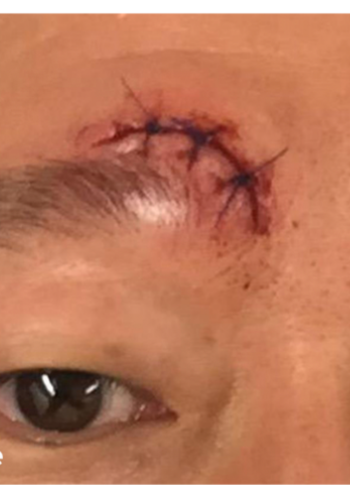
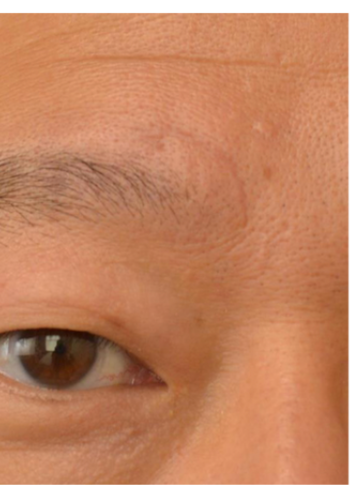
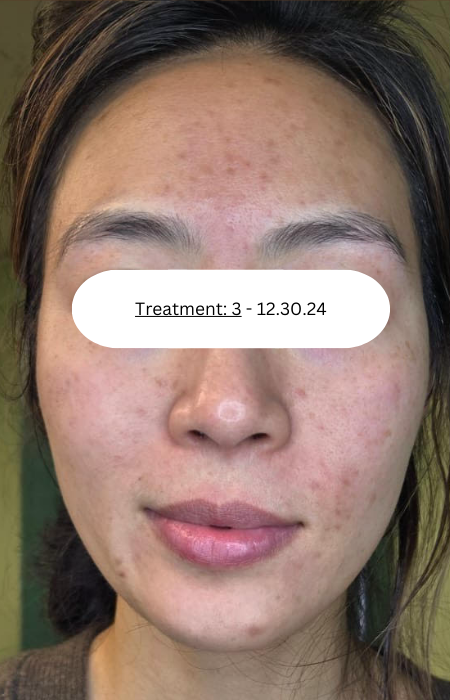
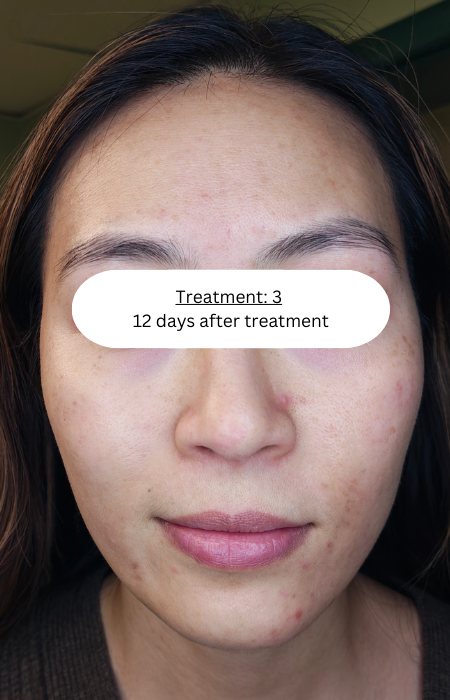
Our treatments
We combine medical and aesthetic expertise to create personalized skincare solutions using advanced laser and energy-based devices.

FAQ
Q: Why do some scars look different from others?
A: The appearance of a scar depends on factors like skin type, depth of the wound, collagen production, and location on the body.
Q: Does sun exposure affect scars?
A: Yes, scars can darken or become more noticeable with sun exposure. Using sunscreen can help prevent discoloration.
Q: Can scars be treated?
A: While scars cannot be completely removed, treatments like laser therapy, RF microneedling, and topical creams can help reduce their appearance.
Q: Are scars more sensitive?
A: Yes and no. Scar tissue may have no nerves, making it completely numb, or it may become more sensitive. This happens when scars contract or pull on nearby nerves, including those in deeper tissues.
Q: Why is my old scar swelling?
A: An old scar might swell due to a number of reasons, including: inflammation from irritation or injury to the scar tissue, excessive collagen production leading to a hypertrophic scar or keloid, infection, or a condition called scar sarcoidosis where the body’s immune system reacts abnormally to the scar tissue



